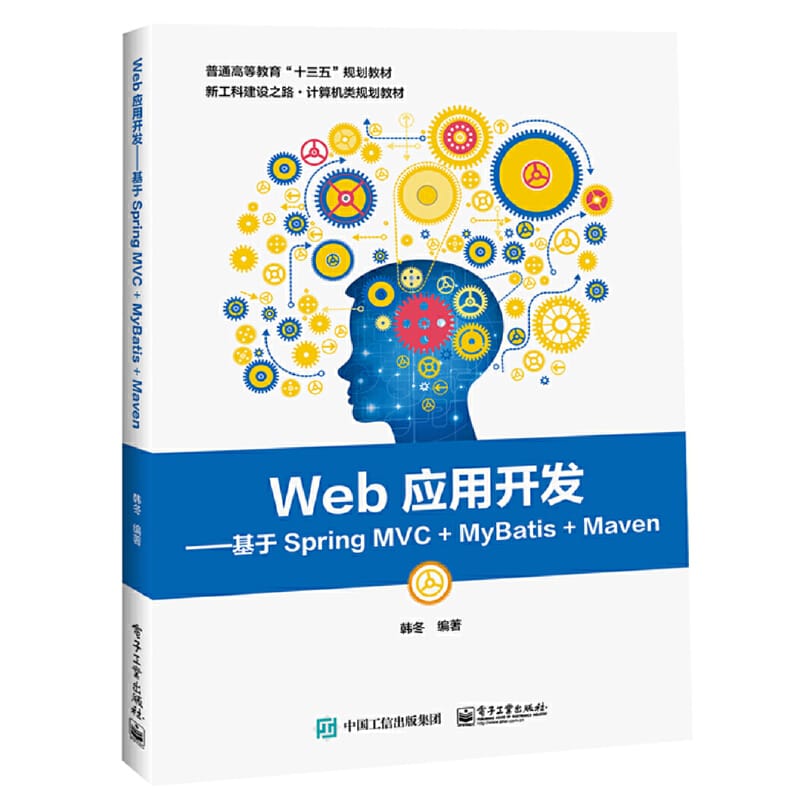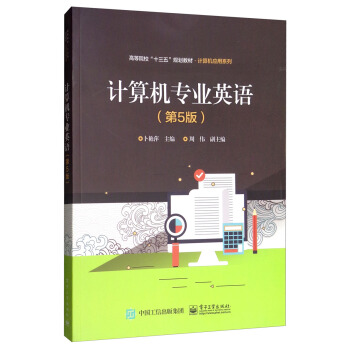现代控制理论基础(英文版)(第2版)
¥62.00定价
作者: 杨惠珍
出版时间:2022-03
出版社:电子工业出版社
- 电子工业出版社
- 9787121414039
- 1-3
- 421585
- 61234186-7
- 平塑
- 16开
- 2022-03
- 488
- 268
- 工学
- 控制科学与工程
- 机械设计制造及自动化
- 本科 研究生(硕士、EMBA、MBA、MPA、博士)
内容简介
现代控制理论是控制类专业学生必须掌握的重要基础理论。本书是编者在多年双语教学实践经验基础上,参考国外优秀教材,按照我国课程教学大纲的要求编写的。全书分8章,主要内容包括状态空间分析法、数学基础知识、线性系统的状态响应、线性系统的可控性和可观性、李雅普若夫稳定性分析、线性系统的状态综合(状态反馈、输出反馈和状态观测器)和最优控制的基本方法。除第1章外,其余各章均编写了多个应用型例题,同时还配有一定数量的练习题和思考题,帮助学生了解和掌握理论方法及其在工程实践中的应用。本书可作为普通高等院校控制类专业本科生和非控制类专业(如电子类、机电类)研究生的教材与参考书,也可供广大工程科技人员学习参考。
目录
Contents__eol__Chapter 1 Introduction to Control Theory 1__eol__1.1 Historical Review and Classical Control Theory 1__eol__1.1.1 Historical Review of Automatic Control 1__eol__1.1.2 Classical control theory 5__eol__1.2 Modern Control Theory 7__eol__1.3 Design of Control Systems 9__eol__1.4 Outline of This Book 12__eol__Chapter 2 Preliminary Mathematical Knowledge 14__eol__2.1 Foundations of matrix algebra 14__eol__2.1.1 Matrices 14__eol__2.1.2 Algebraic operations with matrices 17__eol__2.1.3 Matrix Operations 18__eol__2.2 Vectors and Vector Spaces 20__eol__2.2.1 Vector 20__eol__2.2.2 Vector Spaces and Subspaces 23__eol__2.3 Linear Algebra 26__eol__2.3.1 Eigenvalue and Eigenvector of A Square Matrix 26__eol__2.3.2 Linear Algebraic Equations 28__eol__2.3.3 Similarity Transformation 29__eol__2.3.4 Diagonal Form and Jordan Form 31__eol__2.3.5 Cayley-Hamiton Theorem 36__eol__2.3.6 Definiteness of A Scalar Function and Quadratic Form 38__eol__Exercises 39__eol__Chapter 3 State Variables and the State-Space Description of Dynamic Systems 41__eol__3.1 State-Space Representation of Dynamic Systems 41__eol__3.1.1 State and State Variables 41__eol__3.1.2 State-Space Representation 44__eol__3.1.3 Block Diagrams and Simulation Diagrams 50__eol__3.2 Obtaining State Equations 52__eol__3.2.1 From the Block Diagram 52__eol__3.2.2 From Input-Output Representation 54__eol__3.2.3 Equivalence Transformation of State-Space Representation 67__eol__3.3 Transfer Function And Realizations 68__eol__3.4 State-Space Representation of Linear Discrete-Time Systems 72__eol__3.5 Summaries 76__eol__Exercises 76__eol__Problems 78__eol__Chapter 4 Time Response of Linear Systems 80__eol__4.1 Solution of LTI State Equations 80__eol__4.1.1 Linear Homogeneous State Equations 80__eol__4.1.2 The State Transition Matrix 83__eol__4.1.3 Linear Nonhomogeous State Equations 87__eol__4.2 Numerical Solution of State Equations 89__eol__4.3 Solution of Linear Discrete-Time State Equations 92__eol__4.4 Discretization of Continuous-Time Systems 94__eol__Exercises 96__eol__Problems 98__eol__Chapter 5 Controllability and Observability 99__eol__5.1 Corollaries of Cayley-Hamilton Theorem 100__eol__5.2 Controllability and Observability of LTI Systems 101__eol__5.2.1 Controllability Definition and Rank Criterion 101__eol__5.2.2 Observability Definition and Rank Criterion 110__eol__5.2.3 Controllable Canonical Form and Observable Canonical Form 115__eol__5.2.4 Principle of Duality 118__eol__5.3 Structural Decomposition of LTI systems 119__eol__5.4 Controllability, Observability and Transfer Function 125__eol__5.5 Controllability and Observability of Discrete-Time Systems 128__eol__5.5.1 Controllability of Discrete-Time Systems 128__eol__5.5.2 Observability of Discrete-Time Systems 131__eol__5.5.3 Controllability and Observability After Sampling 133__eol__Exercises 135__eol__Problems 137__eol__Chapter 6 Lyapunov Stability 139__eol__6.1 Preliminary Examples 139__eol__6.2 Stability Concepts 141__eol__6.2.1 Equilibrium State 141__eol__6.2.2 Stability Definitions 142__eol__6.3 First Method of Lyapunov 144__eol__6.3.1 Eigenvalue Criterion for Linear Time-invariant System 144__eol__6.3.2 Eigenvalue Criterion for Linearized Time-invariant Systems 146__eol__6.4 Second Method of Lyapunov 148__eol__6.5 Lyapunov Equation 153__eol__Exercise 155__eol__Problems 156__eol__Chapter 7 State Feedback and State Observer 157__eol__7.1 State Feedback and Output Feedback 158__eol__7.1.1 State Feedback 158__eol__7.1.2 Output Feedback 160__eol__7.2 Pole Placement using State feedback 161__eol__7.3 Pole placement using Output Feedback 165__eol__7.4 State Observer 167__eol__7.4.1 Full-Dimensional Observer 167__eol__7.4.2 Reduced-Dimensional State Observer 171__eol__7.5 Feedback From Estimated States 175__eol__7.6 The Engineering Applications of State Feedback and Observer 178__eol__7.6.1 State Feedback Controller Design For The Invert




